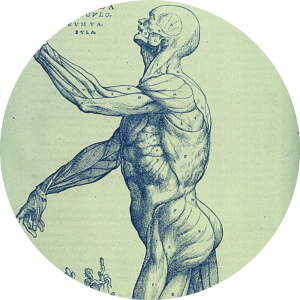To test a muscle follow the instructions in the Muscle Test you are using (you can find it from the Muscle Atlas, the Joint Atlas or directly from the search bar in the Homepage).
While Testing a Muscle we are searching for a Muscle Change (if working with a specific muscle) or an Indicator Change (if working with a muscle as a “generic” Indicator Muscle (IM)).
A muscle can actually be, in the most accurate description (as taught in Applied Physiology), in 7 different "states". In practical application, the 5 “testable” states collapse into 3:
- An Hypertonic Muscle
- A Normotonic Muscle
- An Hypotonic Muscle
And,
if you are using a "ternary testing" like this, you are familiar with these
terms. These
categories treat the muscle response testing as a “digital” test with extreme answers as the only possibilities: totally hyper, totally normal, totally hypo. If you
want to go beyond this limit to find more subtle muscle states, you should consider Analogue Testing.
Many
modalities (Modality – School – Branch) use a Binary Testing and search
only for 2 states with the test:
- An Hypertonic Muscle or Normotonic Muscle
- An Hypotonic Muscle
In this case, when we are monitoring a muscle (Muscle Monitoring) to obtain a Balance, we tend to say that a muscle can be:
- “strong” (Strong Muscle) or
- “weak” (Weak Muscle),
but these terms are
inaccurate and we should avoid them.
Read
also Muscle Response Test 2: Different ways of testing and Muscle response Test 3: refine your skills to hone your skills. This
text is modifiable, you can add useful information and, if something important
is missing, add it in the appropriate Unit of Knowledge. Collaboration
always wins.

